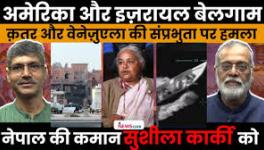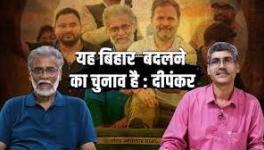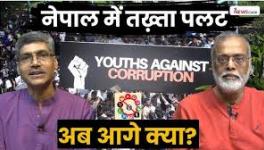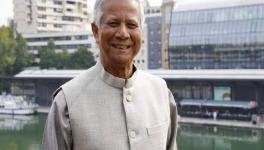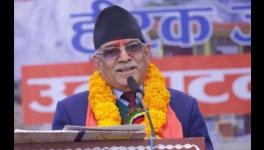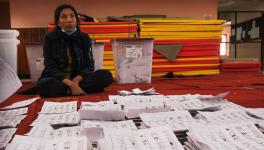Nepal: Historic Merger of Two Communist Parties
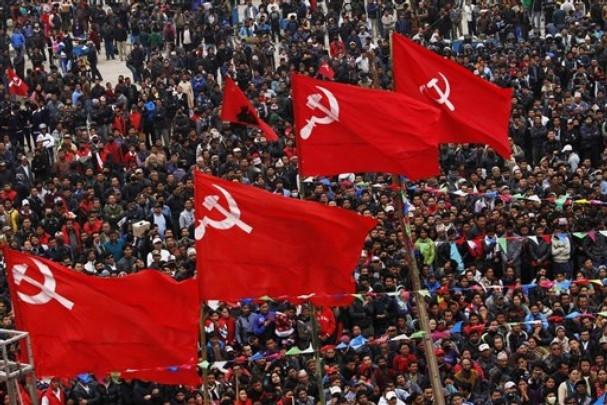
In a historic development for the communist movement in Nepal and across the globe, two major communist parties in Nepal have decided to merge forging a united party. Adopting the ‘Marxist-Leninist’ ideology, the ruling Communist Party of Nepal – United Marxist Leninist (CPN-UML) and Communist Party of Nepal- Maoist Centre (CPN-MC) on Monday decided to form a single party- Nepal Communist Party (NCP).
"This is an agreement to merge, but there are other issues we need to conclude before we completely unify," senior Maoist leader Narayan Kaji Shrestha told, noting that the merger process will take at least a month.
On February 19,, the UML Chairman and Prime Minister KP Sharma Oli and the Maoist Chairman Pushpa Kamal Dahal ‘Prachanda’ signed a seven point deal. UML leaders Jhalanath Khanal, Madhav Kumar Nepal, Bamdev Gautam and Ishwor Pokharel and Maoist leaders Narayan Kaji Shrestha and Ram Bahadur Thapa also signed the agreement.
The two parties will now work on an interim statue for the unified party and organising a joint convention.
Last month, former Prime Minister of Nepal, Madhav Kumar Nepal speaking to Newsclick at the sidelines of Asian Assembly of People Movement and Organisations held in Dhaka had said that the merger will usher the communist movement in Nepal to a new era.
Although the parties have agreed on Marxism-Leninism as their core ideology, they will continue the conversation on the UML’s ‘People’s Democracy’ and the former rebel party’s Maoist ideology.
The unification decision comes a week after the alliance formed the government under the leadership of KP Oli. Recently, the UML and MC alliance had managed to win two third of the seats in the 275 member House of Representatives and formed government in six out of seven provincial assemblies in Nepal.
The unification of UML and MC, will be a phoenix movement as the old Nepal Communist Party formed in 1949 in Calcutta will be born again. The Himalayan nation had been long reeling under the clutches of monarchy and feudal oppression.
Nepal was ruled by a king until 2008. It was in 1858 King Surendra bestowed on his prime minister the title of Rana (an old title denoting martial glory). The prime minister's position was a hereditary one.
Rana rule was marked by exploitation and tyranny of the countries poor. Under the regime of Ranas, the kings were reduced to ceremonial rule, and in 1950s with the support from India Ranas were overthrown, and the monarchy rule prevailed.
In 1960, the king, with the support from the army used his emergency powers to dismiss the cabinet and arrest its leaders “on the charge that they had failed to provide national leadership or maintain law and order”. This led to a wave of repression against the political parties, and the Nepal Communist Party was banned.
The situation was conducive for the communist movement to grow as caste and feudal structure had broken the backbone of the country’s toiling masses. According to data available in 1981, Nepal was one of the least urbanized countries in the world, with only 6.3 percent of its total population residing in urban areas. Furthermore, when the monarchy began consolidating their power, ‘only 2 percent of the adult population was literate’, the infant mortality rate was ‘more than 60 percent’, and average life expectancy was 35 years.
The period till 1990, gave rise to multiple communist movements and organizations.
In 1990, the seven different Communist Parties and groups, including the CPN(ML) and CPN(Marxist) came together to launch a mass struggle against the Partyless Panchayat system under the banner of the United Front. The struggle was successful in establishment of the multi-party system. In January 1991 the CPN(ML) and CPN(Marxist) fused to form the Communist Party of Nepal (Unified Marxist-Leninist) or CPN-UML.
In 1993, the Fifth National Congress of the CPN(UML) Congress adopted the "People's Multi-Party Democracy" as the political programme of the Nepalese revolution, with the slogan "oppose dogmatism and liquidationism, uphold the Banner of Marxism Creatively".
The CPN UML formed minority government in 1994-95 and 1997-1999, but in 1999 election despite getting 31% vote the UML couldn’t form a government.
On the other hand, the Communist Party of Nepal (Maoist Centre) was formed out of split in the Unity Centre in 1994 between the two fractions led by Pushpa Kamal Dahal and Nirmal Lama. The CPI (Maoist) fraction led by Dahal decided that "for the true liberation of the people, all efforts must be concentrated for the development of a people's war that would usher in the new people's democratic form of government" and officially decided to give up its policy of taking part in parliamentary elections. A Maoist armed struggle began in 1996 and went on till 2006 with the signing of Comprehensive Peace Accord.
The 2006 peoples movement for democracy led to Nepal’s transition from monarchy to democracy, and with monarchy was abolished. In 2008 election, the Maoists came to power and in May 2008, Nepal was established as a federal republic.
Till recently, from its transition from Monarchy, Nepal had ten Prime Ministers in almost ten years. The merger provides hopes for a stable government, which according to the agreement will be on rotational basis between KP Oli and Pushpa Kamal Dahal.
Get the latest reports & analysis with people's perspective on Protests, movements & deep analytical videos, discussions of the current affairs in your Telegram app. Subscribe to NewsClick's Telegram channel & get Real-Time updates on stories, as they get published on our website.









